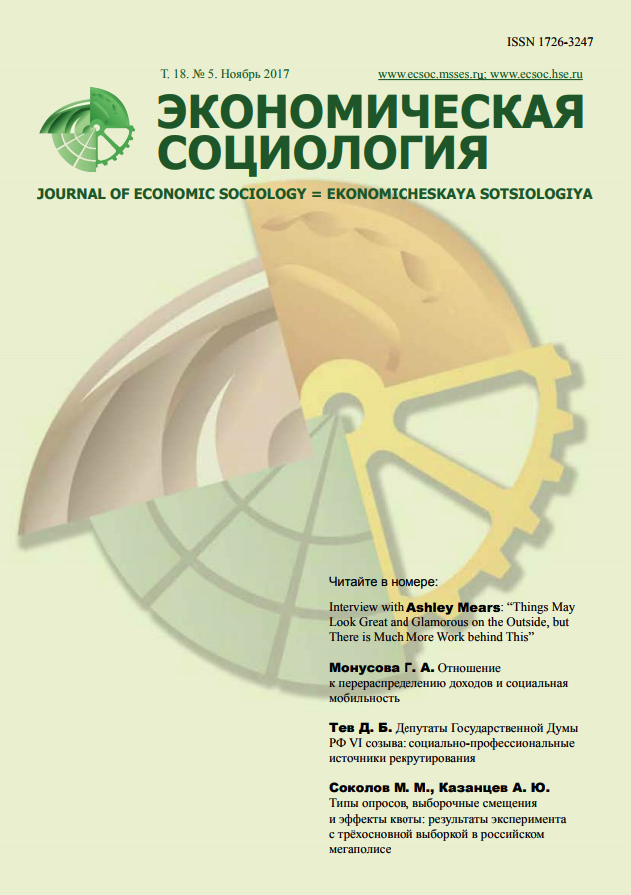Survey Types, Sample Biases and the Effects of Demographic Quotas. The Results of an Experiment with a Three-Frame Survey in a Major Russian City
Abstract
The paper analyzes how the ways of conducting a survey in a major Russian city (landline and cell-phone surveys, and face-to-face customer interviews at local chain stores) influence the estimates of distribution of a number of important variables in the general population. We also analyze the influence of introducing demographic quotas regarding estimates. We argue that (a) age- and gender-related characters of lifestyle heavily influence accessibility via landline phones resulting in over-representation of retired women; (b) education and cultural capital strongly influence accessibility via cell phones; (c) the introduction of demographic quotas usually, but not always, leads to convergence of the results different types of surveys produce (a notable exception is income), but (d) the convergence does not guarantee increasing precision of estimates because the bias caused by intervention of a number of factors affecting accessibility to all types of surveys, such as cultural capital or the character of work conditions, may increase. We also notice that types of surveys not guaranteeing anonymity possibly present severe problems with the sincerity of the answers to politically sensitive questions, with the problems being minimal in the case of interviews at local chain stores, and that sample biases entailed by a survey type probably affect not only estimates of variables, but also of the strength of association between them.













